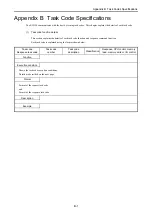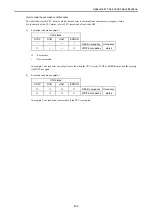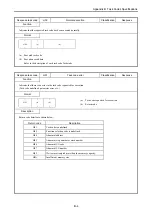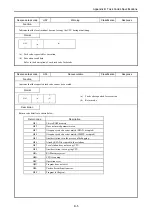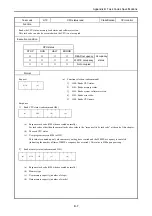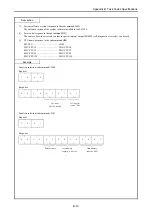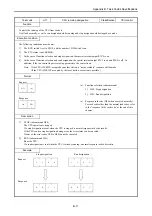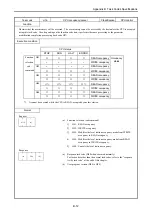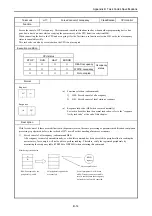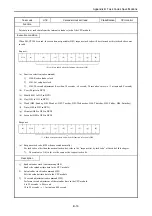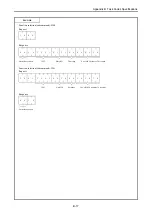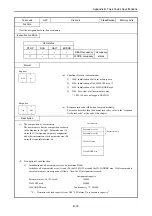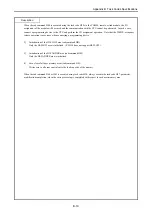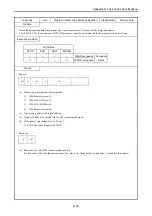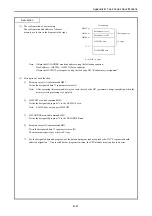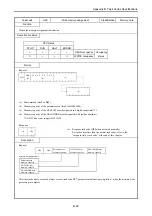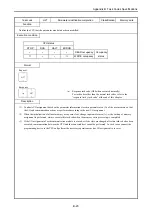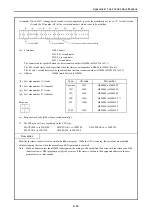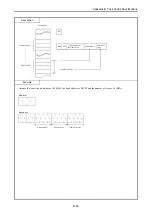
Appendix B Task Codes Specifications
Task code
H17
Forced cancel of occupancy
Classification
CPU control
Function
Forces the cancel of CPU occupancy. This command is used in situations such as when another programming device has
gone down due to an error while occupying the user memory of the CPU (function selection H00).
When connecting the host to the CPU and occupying it for the first time, use function selection H01 so the local occupancy
status is canceled forcibly.
This task code can also be executed when the CPU is not occupied.
Execution condition
CPU
status
STOP RUN HALT
ERROR
{
{
{
{
READ occupancy
Occupancy
{
{
{
{
WRITE occupancy
status
{
{
{
{
Not occupied
Format
Request
H17
(a)
(a) Function selection (subcommand)
1]
H00: Forced cancel of all occupancy
2]
H01: Forced cancel of local station occupancy
Response
(a)
H17
(a) Response task code (H00 when executed normally)
For task codes other than the normal task codes, refer to the “response
list by task code” at the end of this chapter.
Description
With forced cancel, if there are modification in the parameter area, the same processing as parameter modification completion
processing is performed (refer to the task code H27) as well as the canceling of memory occupancy.
1]
Forced cancel of all occupancy (subcommand H00)
All occupancy is canceled unconditionally, so when this command has been executed the peripheral that is reading the
user memory, for example, will not be able to perform reading. Therefore, verify the registered peripherals by
monitoring the occupancy table (WRF040 to WRF04B) when executing this command.
A
B
Not-executable error
READ
request
READ-occupied by the
peripherals A and B
All peripheral registrations
are canceled
Even if peripheral A or B issues
a READ request, a not-executable
error is sent because the occupancy
is already being forcibly canceled.
Member registration area
B-14


